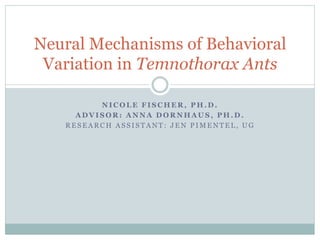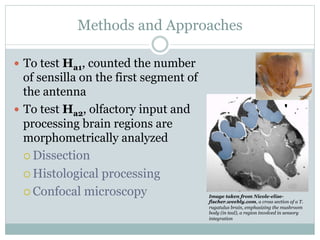1) The research aims to determine the relative contributions of the central and peripheral nervous systems in creating response thresholds in Temnothorax rugatulus ants.
2) Preliminary work found variation in the number of antennal sensory hairs independent of antenna size, suggesting a potential role of the peripheral nervous system.
3) The study will test whether response thresholds correlate more strongly with number of sensory hairs or brain region morphology to identify the dominant source of behavioral variation.










